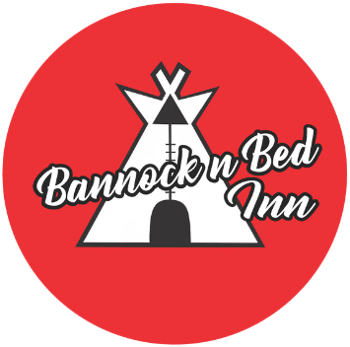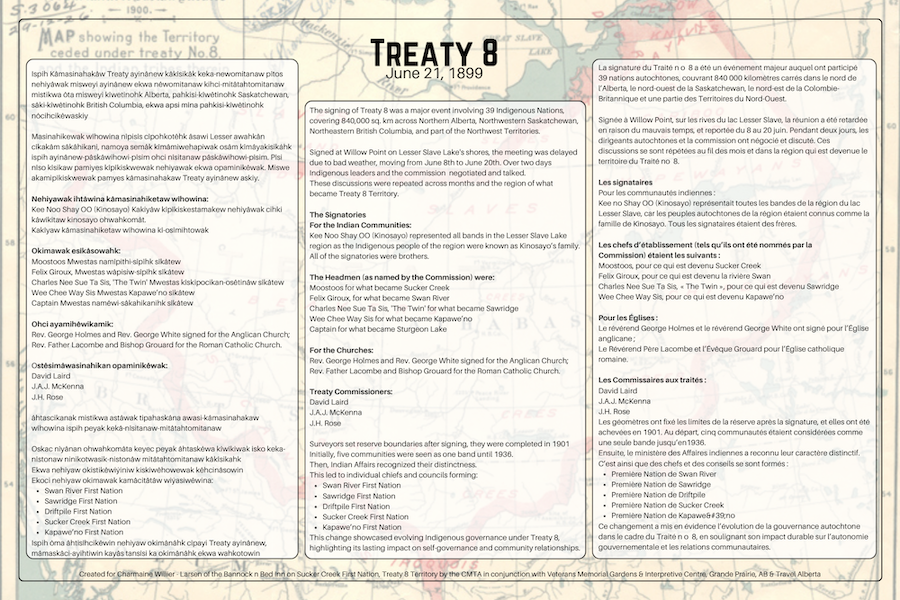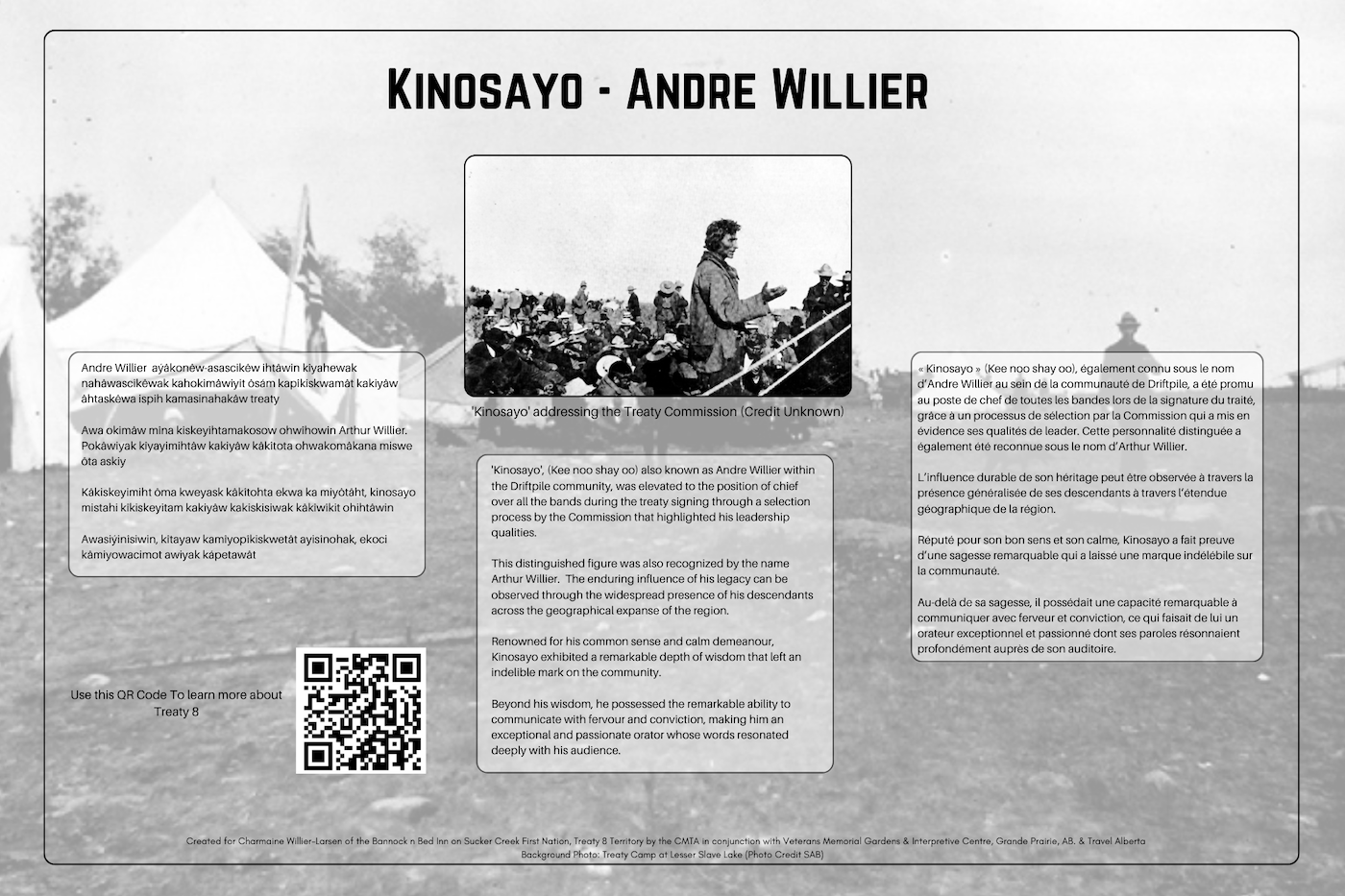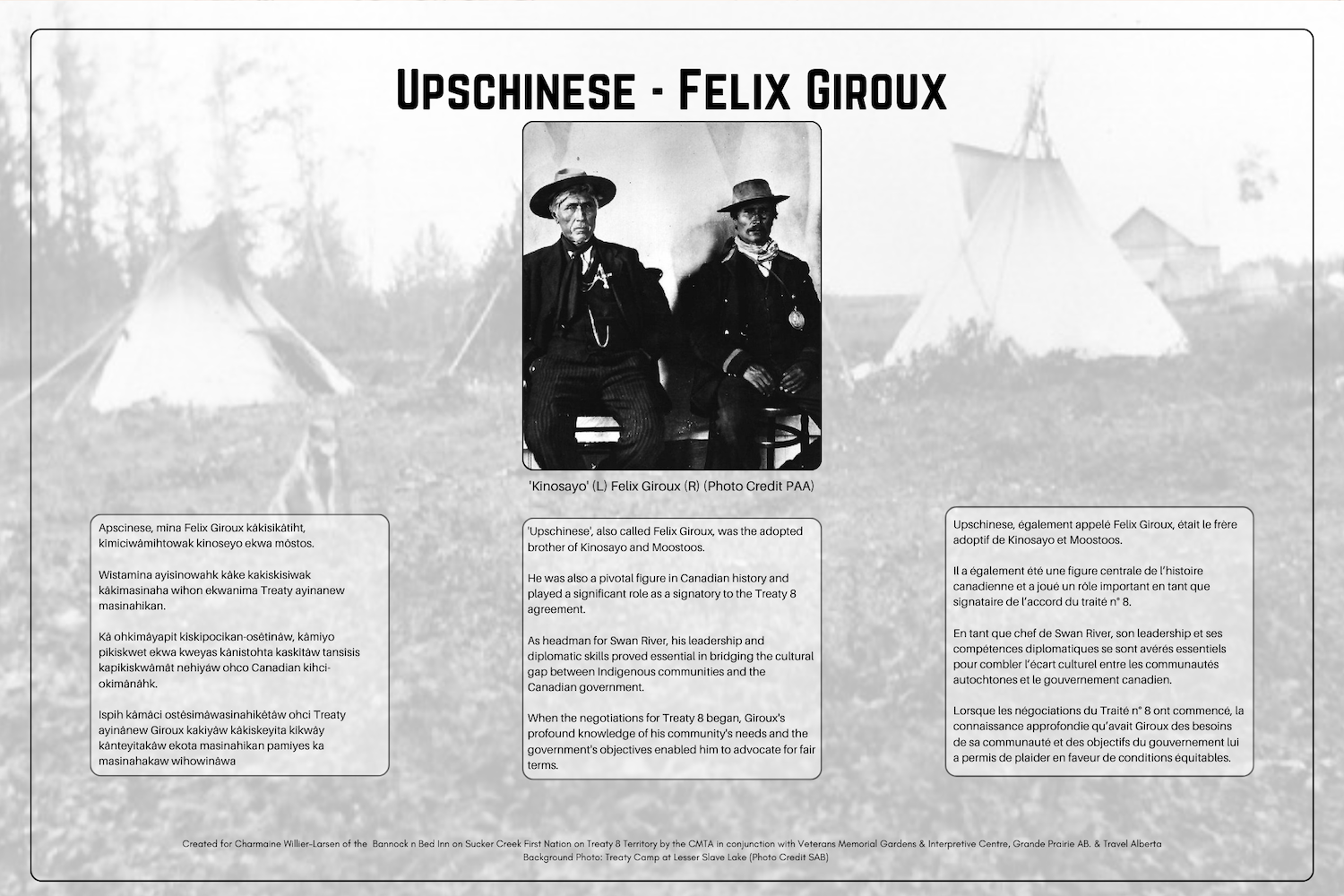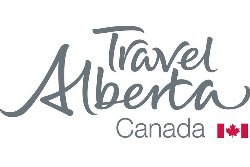The Signing of Treaty 8
The signing of Treaty 8 was a major event involving 39 Indigenous Nations, covering 840,000 sq. km across Northern Alberta, Northwestern Saskatchewan, Northeastern British Columbia, and part of the Northwest Territories.
Signed at Willow Point on Lesser Slave Lake's shores, the meeting was delayed due to bad weather, moving from June 8th to June 20th.
Over two days Indigenous leaders and the commission negotiated and talked.
These discussions were repeated across months and the region of what became Treaty 8 Territory.
The Signatories
For the Indian Communities:
Kee Noo Shay OO (Kinosayo) represented all bands in the Lesser Slave Lake region as the Indigenous people of the region were known as Kinosayo’s family.
Click here to read Kinosayo's story
All of the signatories were brothers.
The Headmen (as named by the Commission) were:
- Moostoos for what became Sucker Creek - click here to read his story
- Felix Giroux, for what became Swan River - click here to read his story
- Charles Nee Sue Ta Sis, 'The Twin' for what became Sawridge
- Wee Chee Way Sis for what became Kapawe’no
- Captain for what became Sturgeon Lake
For the Churches:
- Rev. George Holmes and Rev. George White signed for the Anglican Church;
- Rev. Father Lacombe and Bishop Grouard for the Roman Catholic Church.
- Treaty Commissioners:
- David Laird
- J.A.J. McKenna
- J.H. Rose
- Surveyors set reserve boundaries after signing, they were completed in 1901
Initially, five communities were seen as one band until 1936. Then, Indian Affairs recognized their distinctness.
This led to individual chiefs and councils forming:
- Swan River First Nation
- Sawridge First Nation
- Driftpile First Nation
- Sucker Creek First Nation
- Kapawe’no First Nation
This change showcased evolving Indigenous governance under Treaty 8, highlighting its lasting impact on self-governance and community relationships.
The storyboard is part of the historical walking tour here at the Bannock 'n' Bed Inn.
Renowned for his common sense and calm demeanour, Kinosayo exhibited a remarkable depth of wisdom that left an indelible mark on the community.
Beyond his wisdom, he possessed the remarkable ability to communicate with fervour and conviction, making him an exceptional and passionate orator whose words resonated deeply with his audience.
This storyboard is part of the historical walkway at the Bannock 'n' Bed Inn
Kinosayo
'Kinosayo', (Kee noo shay oo) also known as Andre Willier within the Driftpile community, was elevated to the position of chief over all the bands during the treaty signing through a selection process by the Commission that highlighted his leadership qualities.
This distinguished figure was also recognized by the name Arthur Willier.
The enduring influence of his legacy can be observed through the widespread presence of his descendants across the geographical expanse of the region.
Renowned for his common sense and calm demeanour, Kinosayo exhibited a remarkable depth of wisdom that left an indelible mark on the community.
Beyond his wisdom, he possessed the remarkable ability to communicate with fervour and conviction, making him an exceptional and passionate orator whose words resonated deeply with his audience.
This storyboard is part of the historical walkway at the Bannock 'n' Bed Inn
Moostoos
Louison Willier, also known as Moostoos, was one of the significant signatories of Treaty 8 in 1899. He was a prominent Indigenous leader and a respected member of the Cree community in the region covered by Treaty 8. He was the eldest brother of seven and a healer.
As a signatory to Treaty 8, he played a crucial role in representing the interests and concerns of his people during the treaty negotiations.
Treaty 8 was a comprehensive agreement that affected the lives of many Indigenous communities, including Louison Willier's Cree community of Sucker Creek. By signing the treaty, he and the other Indigenous leaders agreed to share the land and its resources with the Canadian government in exchange for certain rights and benefits, including reserves, education, agricultural support, annuities, and more.
Louison Willier's involvement in the treaty signing reflected his commitment to seeking peace and friendship with the Crown. However, like many Indigenous leaders of that time, he might have had differing interpretations of the treaty's implications and consequences for his people's way of life and sovereignty.
Today, Louison Willier's role in the Treaty 8 signing is remembered as part of the complex and evolving history of Indigenous-Crown relations in Canada. The treaty and its legacy continue to be subjects of ongoing discussion and efforts towards reconciliation between Indigenous peoples and the Canadian government.
This storyboard is part of the history walking tour here at Bannock 'n' Bed Inn.
Upschinese
'Upschinese', also called Felix Giroux, was the adopted brother of Kinosayo and Moostoos.
He was also a pivotal figure in Canadian history and played a significant role as a signatory to the Treaty 8 agreement.
As headman for Swan River, his leadership and diplomatic skills proved essential in bridging the cultural gap between Indigenous communities and the Canadian government.
When the negotiations for Treaty 8 began, Giroux's profound knowledge of his community's needs and the government's objectives enabled him to advocate for fair terms.
The storyboard below is part of the history walking tour at the Bannock 'n' Bed Inn.
Charles Nee Sue Ta Sis, 'The Twin'
Charles Nee Sue Ta Sis, 'The Twin' was the signatory of Treaty 8 on behalf of the people who would become known as the Sawridge Band.
It is believed that Charles was born in 1845. He married Isabelle (Courteoreille) Nisotesis and the children listed in their home, in 1891 were: François, age 21; Edward, age 18; Germain, age 15: Veronique, age 11; Albert, age 9; St Pierre, age 6; and Paul, age 4.
Some research on Charles on Wikitree.
